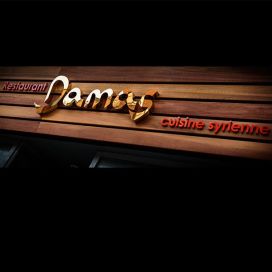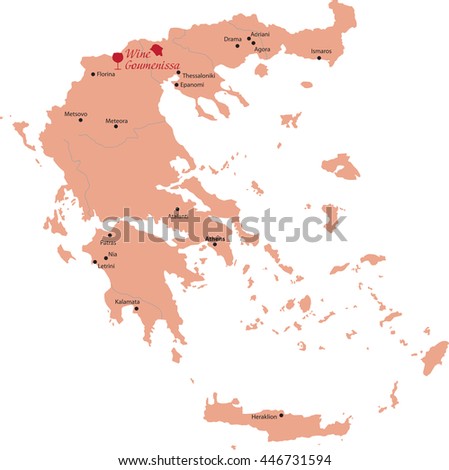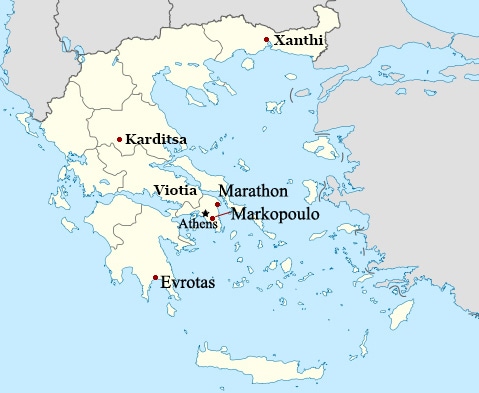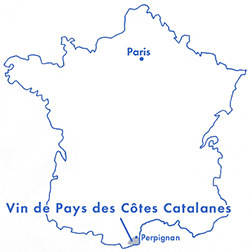JUNE CHEAT SHEET
SPARKLING
Prosecco Bisol is light sparkling wine made from the aromatic grape Glera in the Veneto région of North East Italy. Made using the Charmât method in which the secondary fermentation that produces bubbles takes place in a tank rather than in individual bottles.
Crémant de Limoux is a sparkling wine from the Languedoc in the south of France. Monsieur S is extra Brut (no added sugar) and is made from Chardonnay in the Champagne style (secondary fermentation takes place in each individual bottle.)
Vouvray is a region in the Loire valley in Western France. Autran’s Cap a l’Ouest is a sparkling Vouvray from the grape Chenin Blanc. Minerality and elegance under ripe fruit.
Artiglio is a sparkling wine from Emilia Romagna in North central Italy. The Spergola and Moscato have 3 days skin contact. Aromatic, and with a slightly orange texture. Bora Lunga sparkling. Rare.
Gerbais’ Grains de Celles is from the Aube, the southern region of Champagne. Made of 50% Pinot Noir + 25% Pinot Blanc + 25% Chardonnay, it is lean, aromatic, and the red fruit of Pinot noir shows through. Dry.
Doquet Horizon is Champagne from the Cote de Blancs region in central Champagne. It is a Blanc de Blancs (100% Chardonnay) and perhaps more classic than Gerbais with bigger bubbles and more classic yellow apple and white flowers with minerality.
Cest Sucré by Lelarge Pugeot is the only one of our champagnes with significant dosage (sugar added). The 27 g/l make this ideal for dessert or spicy food pairings. 65 meunier 20 pinot noir 15 Chardonnay.
WHITE WINE
EAST
Sclavos Robola is from the western Greek island of Cephalonia, Robola is the grape. One of the first natural winemakers in Greece. The wine is bone dry with lots of rusty and steely minerality under some ripe pear and stone fruit.
Poema is old vines of Riesling from eastern Serbia. Very dry again but here the minerality is more chalky and the aromatics on minty herbs and bright green apple.
Tourelles Blanc from the Bekaa Valley in Lebanon is Viognier Chardonnay Obeideh and Muscat d’Alexandrie. Fruitier than the others, some ripe pineapple, mango, honey, and a softer palate than finishes with some Rhone like bitters. Fruity not sweet.
Chateau Musar is an absolutely legendary Lebanese house. The wine is astounding. World Class. Rich. Sumptuous. Mysterious.
Bargylus is a white blend of Chardonnay and Sauvignon Blanc from the northwest coast of Syria. It is not oaky, but gives a nice blend of tropical honeyed fruit and pear on the nose, with Bargylus’ trademark saltiness on the smooth, well balanced palate.
IBERIA
Leiranna Joven is Albariño from Rias Baixas, a region in Galicia, NW Spain. Clean, crisp, high acidity, lemon lime, minerality and saltiness.
Sincronia is a Chardonnay, Parellada blend from Mallorca and Mesquida Mora. Nose of orchard fruit, wild herbs, flowers. Lower acidity, light body, fresh, and full of nice bitter iodine notes.
Dao Branco is a magnificent wine from the Dao region in Portugal. Very deep prodound minerality, petrol and steel, with a touch of citrus showing up on the broad, rich, palate.
Partida Creus has become a very famous natural wine house in Catalonia. XL stands for Xarel.Lo, the grape. Really lovely herbal aromatics: eucalyptus, essential echineacha and ylang ylang. Salty minerality, not much fruit. Good energy on the palate, tension and nervousness.
Tanca els Ulls is another house in Catalonia who makes a lovely Maccabeu. Intense salty freshness here as well, but with more body, richness, and viscosity. Apples and pears with some high acidity. Nice.
Enric Soler is a favorite of Guillaume’s vigneron’s. He is in the Penedes region of Catalonia, and makes his Improvisacio from Xarel.Lo partially raised in oak and partially in cement. Much more classic than the last few wines, very Burgundian: Sappy orchard fruit sprinkled with spices, an acidity balanced with body. Gorgeous
Oriol Artigas is in the Alella region of Catalonia, and makes his La Bella from old vines of Pansa Blanca, which is a clone of Xarel.lo. 11 days of skin contact, so in fact this is an orange wine, but drinks more like a dense white. Wildly textured, with tons of peach skin, some apricot, and wild herbs, seabreeze. Big palate, salty and intense. Perfect for tasting menu. Less than 1000 btls made.
ITALY
Fiobbo is a wine from the appelation Offida Pecorino by Aurora. Half large oak, half stainless. A medium body white with some spicy ‘picante’ components. Green apple, citrus, herbs, hay – clean, easy drinker with bitter herbal finish.
Arcese is a very aromatic, off dry, effervescent wine from Vittorio e Figli in Piemonte. Tropical fruit, floral and orange blossom nose. Rich palate with some sweetness, viscosity, and effervescence.
Vermentino from Il Torchio is a wine from the appelation Colli di Luni in Northern Tuscany. Easy drinking, think of it as a premium pinot grigio. Honeyed peach, some minerality, and soft hay on the nose gives way to a smooth, integrated palate that refreshes without too much acidity.
Kofererhof’s Riesling is from the Northernmost reaches of Italy, near the Austrian Border in the Valley Isarco. Screaming acidity, bone dry with tons of energy. It moves between empyreumatic notes to lime, to peach, and back again. Lovely.
Bianchdudui is a very bizarre unicorn wine from Vittorio e Figli in Piemonte. Old, rich, dense, spicy, floral, slightly off dry Moscato. BEWARE. ONLY FOR CRAZY PEOPLE WHO WANT A ONE OF A KIND EXPERIENCE. HEAVEN WITH SAMKE HARRA.
FRANCE
Maeva is an off dry, but refreshing wine from southwest france La Bouscas. The Cololmbard grapes were affected with Botrytis, a kind of rot that concentrates sugars in wine. It is not super sweet, but not dry. Interesting play between honeyed apricot (from the Botrytis) and essential oils like ylang ylang, white pepper, and earthy notes.
Coste is a Maccabeu from Danjou Banessy in Cotes Catalanes near the Spanish border. Clean apple, pear, and white flowers on the nose, with a broad palate, dry, mineral, and clean. Somewhat Chardonnay style.
Brave Margot is Roussanne from Roussillon house Le Bout du Monde. It is extremely fat and rich. Super overripe apricot, crushed white flowers, and a bit of overripe funky stuff. I like it. Powerful. Oxidative
Le Grand B is the only wine in the world made with Bouysselet by Le Colombiere. Much better than last year’s. Still very rich and broad like Brave Margot, and intensely overripened fruit. But it also has this salty freshness to balance things out. Nice. Big body. Oxidative.
Aux Betises is a Marsanne Roussanne from the Crozes Hermitage region of the Northern Rhone from David Reynaud. Interesting palate playing between honey, butterscotch, and steel and petrol. The palate is broad and rich but has almost no acidity. Kind of wild. Nice.
La Virada is an extremely rich white from the South west appelation Jurancon by Camin Larredya from Gros Manseng, Petit Manseng. Slightly oxidative Apple-pie, Strawberry yogourt, mandarin orange, cinnamon, really interesting and gourmand.
ORANGE
ADN by Lassolle in the Cotes-du Marmandais region of South west France is a Sauvignon Blanc and Sauvignon Gris blend. Lightly orange (3 days skin contact). Haven’t tasted it. Probably crazy
Bora Lunga by Cinque Campi is a light and aromatic orange from Spergola and Moscato from the Emilia Romagna region in north central Italy. Floral, perfumed, pear on the nose, with just a hint of the skin contact grip on the fresh and lively palate. Nice. Great salad or grilled fish wine
Primo Fuoco by Sammontana is another light orange wine with 3 weeks skin contact made from Trebbiano in Tuscany. It has nice lemon peel, spicy notes, medium body with a nice waxy texture.
Amphora from Lispida is a longer aged orange wine from the Veneto region of Northeast Italy. A more classic style for orange wine: More dried fruits, caramelized peaches, tangerine peel, and a broader, richer palate with more tannic structure.
Anisos from Eugenio Rosi is from Vallagarine, a region in Trentino – north central Italy. It is Chardonnay, Pinot Blanc, Nosiola aged in oak for a week on skins. It is like a cross between oaky chardonnay and orange wine. A good introduction to the style. You have the slightly buttery notes, with apple and pear, but also some volatile orange zest action from the skin contact.
ROSE
Pastel from Realtiere is a classic Provencal rose, with lovely stone fruit, cherry, and some provencal herbs. Super classic, just a touch of sweet. Grenache and Carignan from Coteaux d’Aix en provence.
Tibouren Tradition is a legendary rosé from Clos Cibonne in the Provence. More intense in acidity and salinity next to the Pastel, less fruit, though there is nice melon notes. Tibouren is the grape, it is almost extinct.
Travel by Mosse is from grapes grown in the Tavel region of the Rhone valley but vinified in the Loire. It is barrel fermented, richer in style than the Provence roses. A touch of spritz on opening with a mineral/funky undertone.
Cartoixa de Marina from Tanca Els Ulls is amazing from the Tarragon region in Catalonia. From Cartoixa, it blends amazing fresh lychee, honeydew melon, and underripe pineapple with wild saltiness and minerality. SO GOOD. Dry dry.
Riflessi Rosi is a magnum of Cabernet Sauvignon and Marzemino from Eugenio Rosi in Vallagarina, Northcentral Italy. It has some power, some tannin, some dark fruit and licorice character. Nice. Clean.
RED
EAST
Xinomavro Nature by Thymiopoulos is a natural wine from the Naoussa region in Northern Greece. Strawberry and cherry jam on the nose as usual with some smoky notes and black pepper. Slightl spritz on opening (natural) but nice integration of acidity, body, and tannins. Ripe fruit again but very dry to cut the tannins.
Cinsault Vieilles Vignes is a great, medium body wine from Domaine des Tourelles in the Bekaa Valley. Very ripe, sweet cherry, pomegranate, and hibiscus complicated by some spicebox. It sees old oak. Medium body. Very little tannin. BIG Fruit so it can seem sweet to some.
Chateau Marsyas is a Cabernet Sauvignon, Merlot, and Syrah blend from the Bekaa Valley. Same winemakers as Bargylus. Cassis but also raspberry show through on the nose with a hint of pepper and a pretty strong oak (vanilla). Palate is medium plus body (not overboard like Comte M), and moves through the fruit to dry oaky tannins. For California drinkers. Takes some time to open.
Bargylus is Cabernet Merlot and Syrah from Northwest Coastal syria. Much more finesse than Bekka wines. It has the cassis, but so much salty oystershell, earthiness, dried leaves, figs. Palate is much more integrated, tannins are natural. The wine is very good.
IBERIA
La Peluda from De Haan Altes is produced with a special strain of Garnacha, Garnacha Peluda, in the Terra Alta region of Catalonia. Explosively aromatic, lots of black pepper, cherry, and Catalan spices. Has seen some french oak which rounds out an energetic palate.
Rubaiyat is a big bodied Syrah from Barranco Oscuro, a house high in the Sierra Nevada Mountains near Granada in southern Spain. Super earthy and peppery with some blueberry and ripe plum. Very rich and ripe from this HEAT in Spain. A bit funky on the back end. Tannins. Big Tannins. Watch for Depot. Decant.
Salaksio is a Cabernet Sauvignon and Grenache blend from Jordi Llorens in Catalonia. Light spritz on opening. Very rich ripe fruit but maintains an undeniable lightness – no oak (clay amphorae). Nice spiciness also. Not for classic types. A bit sparkling and leaner than the fruit lets on.
1368 Cerro Las Monjas is a Cab Franc, Cab Sauv, Grenache, Merlot blend from Barranco Oscuro, a house high in the Sierra Nevada Mountains near Granada in southern Spain. 1368 refers to the altitude, the highest in Europe, 1368 m above sea level. Super ripe nose of dark fruit and an undeniable barnyard manure action. It is what it is. With time open, the manure melts into overripe fruit and spices. Big palate, nice acidity. Crazy wine.
ITALIE
San Lorenzo’s di Gino is a wine from the Rosso Piceno appelation in Le Marche, a region in east central Italy. It is an unoaked Montepulciano Sangiovese blend aged in concrete. Light, floral, red fruit, a hint of espresso bean, some paradigmatic Italian acidity and a touch of tannin.
Bartali’s Villa Reale is a supertuscan style Sangiovese from Tuscany. Aged in French oak it gives a round, vanilla touch to Sangiovese’s floral and earthy aromatics. Medium plus body, soft.
The Ribote from Radici e Filari is a Freisa d’Asti, an appelation in Piemonte in NorthWest Italy. It is a beautifully balanced medium body wine that shows cherry, some warm tobacco, peppermint, with a hint of well integrated oak. Beautiful wine. Sleeper.
Arcipressi from San Martino is a Sangiovese field blend from the Collini Lucchesi appelation in Tuscany. Super clean, elegant florals and fresh strawberry nose. Rose petals. Palate is lean, light, but the finish is long with a satisfying dry tannic finish. Lovely. Elegant.
SP68 from Ariana Occhipinti is a light bodied Sicilian red from Nero d’Avola and Frappato. The wine is very lively, bright acidity immediately on the palate. Signature ripe rasperry, cinnamon, but also a hint of dried herbs (thyme, oregano). Light palate but lots of bright acidity. Dry.
Vadiaperti’s Aglianico is a medium bodied wine from the Campania region in southwest Italy. The nose is quite ripe, on plum and dark fruit like cassis, but with a definite umami (miso? Soysauce?) background. Tight, a bit of balsamic, a note of green pepper. Things are getting more complex here. Round palate, but not heavy with a nice fresh acidity.
Cataldo Calabretta’s Ciro Riserva is a wild wine from southern Italy’s Calabria region. Gaglioppo is a facscinating grape that recalls Nebbiolo: Elegant, floral, full of dried fruit, orange peel, amaro notes. The colour is light, and the wine is a lean medium body, nothing flabby. But the tannins are extremely aggressive and dry. Not for the faint of heart, but delicious.
Bonavita’s Faro is from the Faro region on the Northeast tip of Sicily. It is from Nerello Mascalese, Nerello Cappuccio and Nocera, the same grapes grown on the volcano Etna just to it’s south. The wine is amazing. Deep rich charcoal minerality, black pepper, dried flowers, raspberries and blackberries alike, dark chocolate. Palate is broad but linear – full bodied but clean with perfectly balanced tannins and acidity. YES.
Foradori’s Sgarzon is a very elegan expression of the Teroldego grape from the Dolomiti appelation in the Trentino region of North central Italy. Two things at once: fresh flowers, fresh red fruit on the one hand. But also a deep peppery note. Amphora aging gives a weightlessness but round texture to complement the tangy youth. YES.
FRANCE
Le Temps Fait Tout is a Carignan, Grenache, Syrah blend from Rousillon house Mas de Costefere. Medium body, aged in old oak, it has a nice smokiness and spicy character that runs through the bright red fruit.
Saladin’s Paul is a classic Cotes du Rhone from Grenache with 10% of the white grape Clairette. Macération carbonique, like in Beaujolais. Bright explosive dried fruit (blueberry?) with a hint of pepper and cardamom. Light bodied cotes du rhone.
VO V2 from Olivier Cohen is a very interesting blend of two different years! Syrah, Carignan, Merlot. Brings some freshness to our somewhat gourmand french entrées de gamme. It is not light, but has a really nice fresh, almost green vegetal quality, in the good sense. A nice life. Still has tannin.
Gramenon’s Sagesse is a Cotes-du-Rhone made from Grenache. One year in oak. BIG body grenache from a legendary house. Low acidity, round, but with FRESH, not candied or dried fruit, quite an achievement for the Rhone.
Troullier’s Esprit du Temps is another full bodied grenache, this time from Roussillon. Here we are in heat in terms of fruit and alcohol, and power. Not extremely tannic, but with good balance, and a lot of grenache spices as Roussillon often gives.
Danjou-Banessey’s La Truffiere is a favourite of mine. Grenache and Carignan from Roussillon. Extraordinary, Burgundian elegance. Light to medium body but stunning concentration of fresh strawberries, a hint of smoky mocha from the carignan, and a smooth round finish. Lovely.
Chateauneuf-du-Pape from Clos des Brusquieres is a very traditional style CDP. Grenache blend (13 grapes) that gives the classic dried berries and dried fruit, a hint of roasted cacao, and dark herbs and pepper. Full body and round without any aggressive acidity or tannin. Killer. But not HYPERPOWER CDP.



























